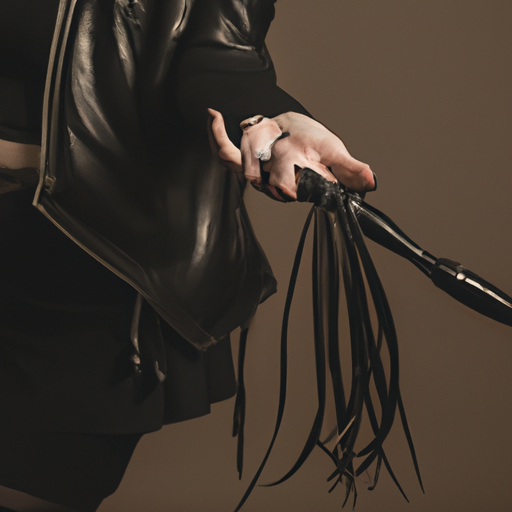In the realm of BDSM and alternative lifestyles, Femdom (short for Female Domination) has gained significant attention and fascination. Often portrayed in literature, films, and online communities, Femdom depicts dominant women and submissive men engaging in power exchange dynamics. However, like any other subculture, Femdom society stories are not immune to misconceptions and stereotypes. In this blog post, we will explore some of the common misunderstandings surrounding submissive characters in Femdom society stories and shed light on the reality behind these misconceptions.

Misconception 1: Submissive men are weak or lacking confidence.
One of the most prevalent stereotypes associated with submissive characters in Femdom society stories is that they are weak, lacking confidence, or unable to assert themselves in everyday life. However, this assumption couldn’t be further from the truth. Submissive men are often individuals who hold high-powered positions in their professional lives. They embrace their submissive side as an outlet for stress relief, personal growth, and exploration of their desires. The act of submitting to a dominant woman allows them to let go of control and experience a different kind of liberation.
Misconception 2: Submissive men are doormats or pushovers.
Another common misconception is that submissive men are mere doormats or pushovers who have no say in their interactions with dominant women. In reality, the dynamics of Femdom are built on consent, trust, and negotiation. Submissive men actively participate in setting boundaries, discussing limits, and expressing their desires and needs. They have a voice, and their opinions and feelings are valued within the power exchange relationship. The submissive role is not a sign of weakness but rather a choice made with full awareness and agency.
Misconception 3: Submissive men are solely seeking sexual gratification.
While sexuality is an integral aspect of Femdom society stories, it is essential to recognize that submissive men’s motivations go beyond sexual gratification alone. For many, engaging in power exchange dynamics provides a sense of emotional connection, fulfillment, and personal growth. The submissive role allows them to explore their desires, vulnerabilities, and fantasies in a safe and consensual environment. The focus is not solely on sexual acts but also on the psychological and emotional aspects of submission.
Misconception 4: Submissive men lack respect for women.
A misconception often associated with submissive characters is that they lack respect for women and view them as objects of desire rather than equals. However, this assumption disregards the fundamental principles of Femdom, which emphasize mutual respect, consent, and communication. Submissive men in Femdom society stories hold deep admiration and respect for dominant women. They understand and appreciate the power dynamics at play and recognize that true submission involves the utmost respect for their dominant partner.
Misconception 5: Submissive men are inherently passive.
Contrary to popular belief, submissive men are not inherently passive individuals. In Femdom society stories, they actively engage in activities that cater to their dominant partner’s desires and preferences. They take pleasure in fulfilling their dominant partner’s needs and fantasies, actively participating in scenes, and shaping their power exchange dynamics. This active participation allows submissive men to experience personal growth, self-discovery, and a deepening sense of intimacy and connection.
In conclusion, Femdom society stories provide a unique lens into the world of power exchange dynamics, exploring the complexities of dominant women and submissive men. While misconceptions and stereotypes may persist, it is crucial to recognize that these stories are rooted in consent, trust, and mutual respect. Submissive characters in Femdom society stories are not weak, passive individuals seeking solely sexual gratification. Instead, they are confident, assertive individuals who actively engage in power exchange dynamics for personal growth, emotional connection, and exploration of their desires. By dispelling these misconceptions, we can foster a better understanding and appreciation for the diverse dynamics within the Femdom community. Visit Them.
What are some common misconceptions about the relationship dynamics between Russian dominatrixes and their clients?
In the world of BDSM, there are various roles and dynamics that individuals explore to fulfill their desires and fantasies. One such dynamic is the relationship between Russian dominatrixes and their clients. However, like any other subject, there are common misconceptions surrounding this unique bond that often lead to misunderstandings and judgment. In this blog post, we aim to debunk some of these misconceptions and shed light on the true nature of the relationship dynamics between Russian dominatrixes and their clients.

Misconception 1: It’s all about pain and punishment
One of the most pervasive misconceptions about Russian dominatrixes and their clients is that their relationship is solely based on pain and punishment. While pain and punishment can be an element of BDSM play, it is crucial to understand that the foundation of this dynamic lies in trust, consent, and communication. Russian dominatrixes and their clients engage in elaborate negotiations to establish boundaries, limits, and safewords, ensuring that both parties feel safe and respected throughout their interactions.
Misconception 2: It’s a one-way power exchange
Another common misconception is that Russian dominatrixes hold all the power in the relationship, while clients are submissive and powerless. However, the reality is far more nuanced. In a healthy BDSM relationship, power dynamics are consensual and consensual power exchange (CPE) is practiced. Both the dominatrix and the client have agency and control over the dynamic, and this power exchange is carefully negotiated and agreed upon beforehand. It is essential to understand that power dynamics in BDSM are not indicative of power imbalances in real life.
Misconception 3: It’s all about sex
While BDSM may involve sexual elements, it is crucial to note that not all BDSM activities are explicitly sexual in nature. Russian dominatrixes and their clients may engage in power play, bondage, discipline, and other activities that focus on control and dominance. The intent behind these activities is to explore and fulfill psychological and emotional desires, rather than solely focusing on sexual gratification. The boundaries and limits set by both parties ensure that activities remain within the agreed-upon scope.
Misconception 4: It’s abusive and degrading
One of the most damaging misconceptions about BDSM relationships, including those involving Russian dominatrixes and their clients, is that they are inherently abusive and degrading. It is crucial to differentiate between consensual BDSM activities and actual abuse. In a healthy BDSM relationship, all activities are consensual and negotiated, and both parties derive pleasure and satisfaction from the dynamic. Trust, respect, and clear communication are the cornerstones of these relationships, and any form of non-consensual or abusive behavior is strictly condemned within the BDSM community.
Misconception 5: It’s a reflection of personal issues
Many people assume that individuals who engage in BDSM activities, including those involving Russian dominatrixes and their clients, do so because of unresolved personal issues or trauma. However, this is a gross oversimplification. BDSM is a consensual and legitimate form of sexual expression, and individuals engage in it for a variety of reasons, ranging from exploring their fantasies to embracing their sexuality. It is crucial to avoid stigmatizing or pathologizing individuals based on their participation in BDSM activities.
In conclusion, the relationship dynamics between Russian dominatrixes and their clients are often misunderstood due to various misconceptions. It is important to approach this subject with an open mind and a willingness to learn. Understanding the principles of consent, communication, and negotiation that underpin BDSM relationships is essential in dispelling misconceptions and promoting a more inclusive and accepting society.